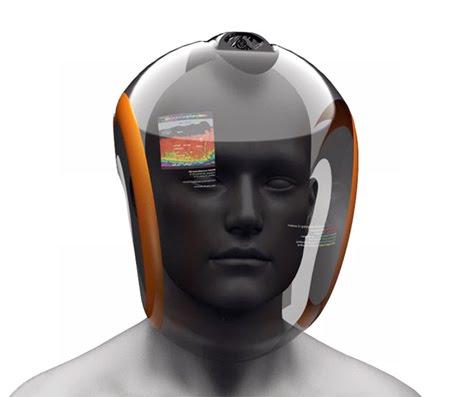
I want one of these!
Immersed Senses is the future of underwater diving and exploration. Immersed Senses changes the way the diver sees, hears, and breathes underwater allowing them to become a part of their surrounding environment.
The current scuba diving system creates many problems for divers. The large air tank is extremely heavy making it difficult to get in and out of water. The overall breathing system is unnatural and forced. Narrow goggles are a constant restriction to the diver’s vision by obstructing all peripheral views. Hearing underwater is another major complaint of divers. Diver’s become confused as to where the sound is coming from because there is no orientation with underwater sound waves. Taking all of these considerations into account the design’s ultimate goal was to increase overall awareness, and improve the senses when diving.
Conceptual thinking of future “blue sky” technology allowed for a system that could change the way a diver is in an underwater environment.
Following the brainstorming phase, sketching and the ideation process launched. Form exploration, as well as technical restrictions, shaped the overall design. The two major considerations during the ideation processes were the breathing apparatus, and the way the diver would view outside the mask/goggle.
Further concept refinement assisted in the final form and technical details of the sketching and ideation process.
To allow the diver to observe the dark depths of the ocean, a LED flashlight was integrated into the design. The light wraps around the rear of the helmet; resulting in a clean and minimal design.
The large OLED glass display offers a panoramic view of the diver’s surroundings, allowing the diver to become part of their visual environment. The OLED single enclosed helmet also allows the extracted oxygen to flow freely throughout the helmet. With no direct breathing apparatus, breathing inside this design simulates the breathing on land.
An interactive OLED display gives access to underwater GPS maps, therefore allowing the diver to navigate efficiently throughout the ocean’s landscapes. The OLED also offers software that can identify all species of fish, coral, and other ocean dwelling creatures that diver is currently viewing. Experiencing an underwater world is now fully interactive.
OLED features such as oxygen toxicity, nitrogen levels, and even body heat offers the diver pertinent information to keep them well informed and safe. There are hundreds of additional features and applications that assist the diver when immersed.
Water leakage is eliminated with the use of a silicone lining that seals the helmet to the skin. The silicone’s flexibility affords the diver to explore with comfortable movements.
Future technology such as haptic glass is integrated into the final design. An optically clear glass with microscopic pours keeps water molecules out, yet it allows sound waves to pass through. Sound travels six times faster underwater than on land, however it is nearly impossible to interpret where the sound is coming from. The haptic glass interprets the sound wave orientation then displays the source and direction on the OLED display.
The orange side panels assist in internal circulation of the extracted oxygen.
The rear of the helmet contains an electrolysis reactor that extracts oxygen from saltwater. The breathable oxygen is circulated throughout the helmet creating a revolutionary underwater breathing experience.
Immersed Senses operates by a battery that utilizes a centrifuge mechanism to pull oxygen from sea water that begins the electrolysis reaction. Saltwater is extracted into the bottom reservoir that reacts with hydrogen gas. The saltwater is then charged by a positive and negative anode/cathode that generates breathable oxygen. Two internal devices help to circulate the oxygen to the diver’s mouth and nose. The diver then breathes in the oxygen and out carbon dioxide which exits the helmet. The battery and stored hydrogen can keep a diver submersed for up to 8 hours.
The final design revolutionizes how a human can breathe underwater, as well as interact with the OLED display offering a panoramic view of the deep sea. Immersed Senses presents the diver an underwater experience like no other.
More Info:
adamwendel.com/1938204/Immersed-Sensesyankodesign.com/2010/05/20/sense-under-water/
designbuzz.com/entry/immersed-senses-lets-scuba-diver-breathe-and-move-freely-underwater/